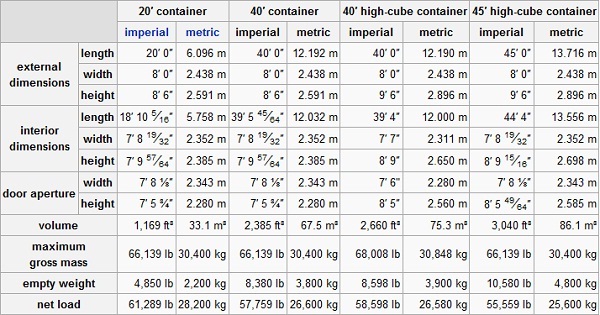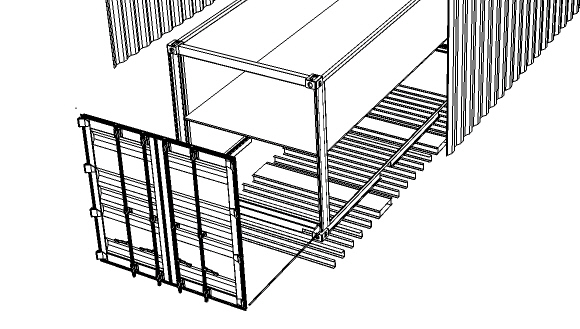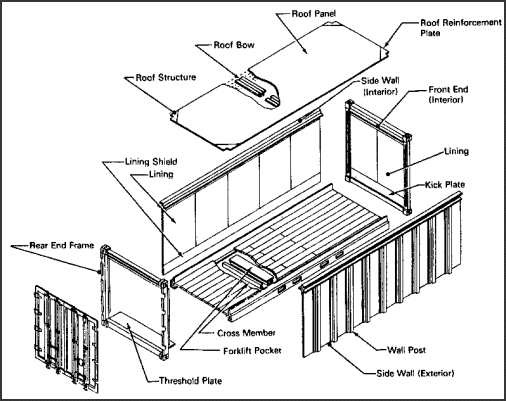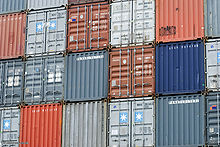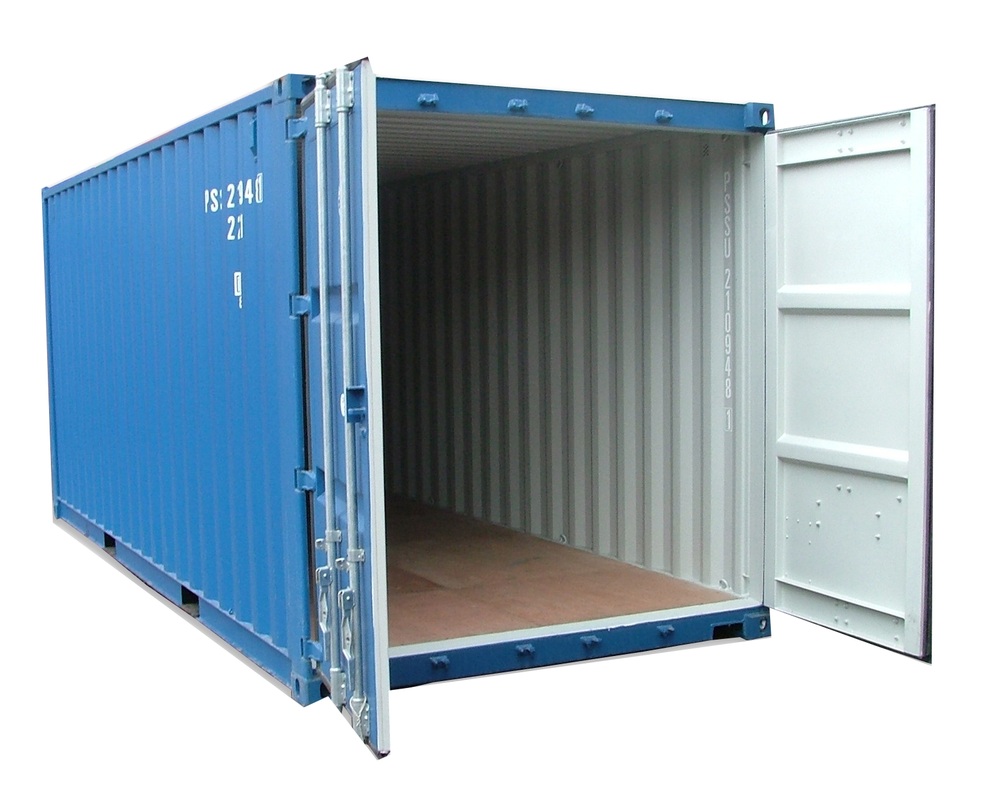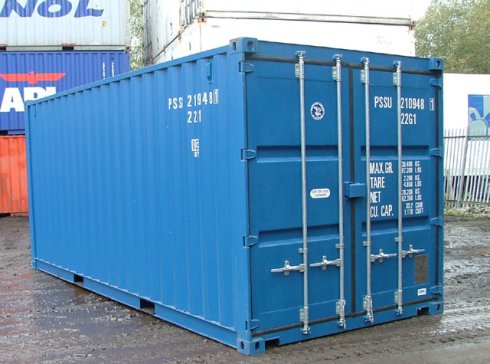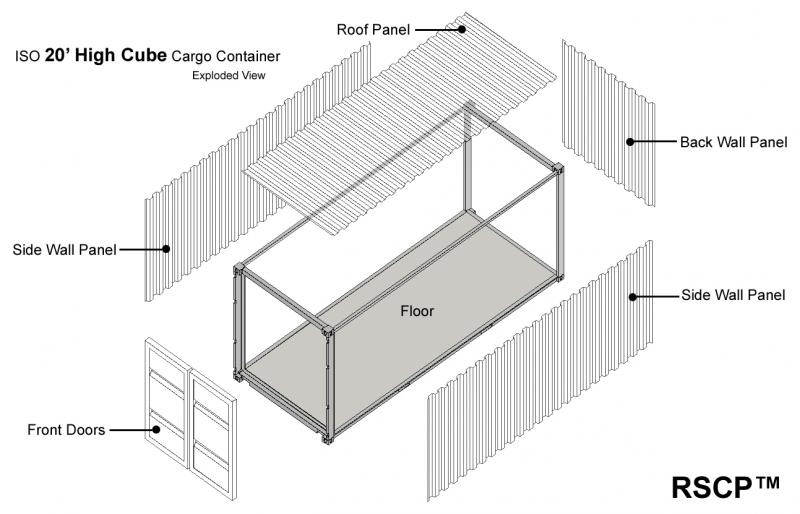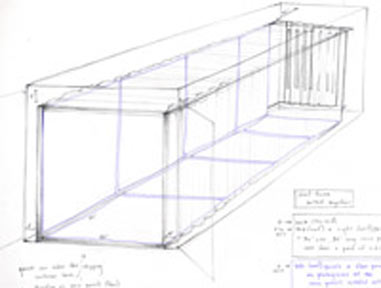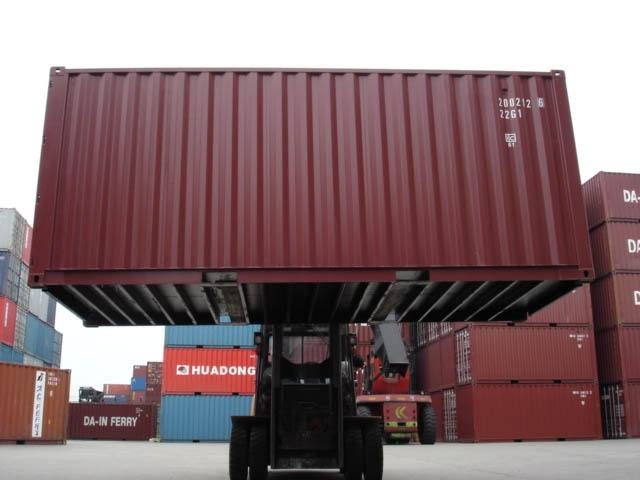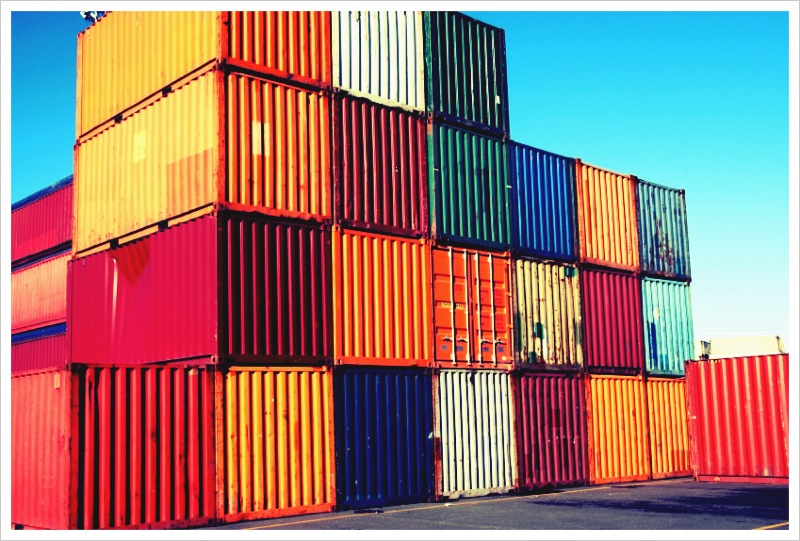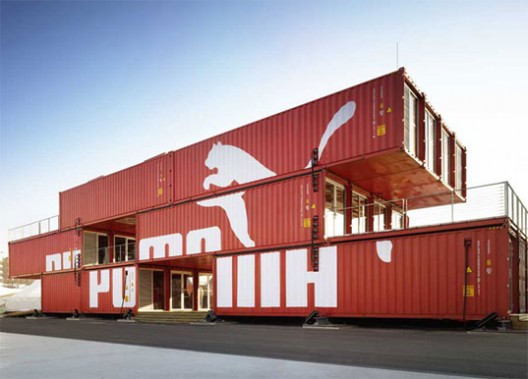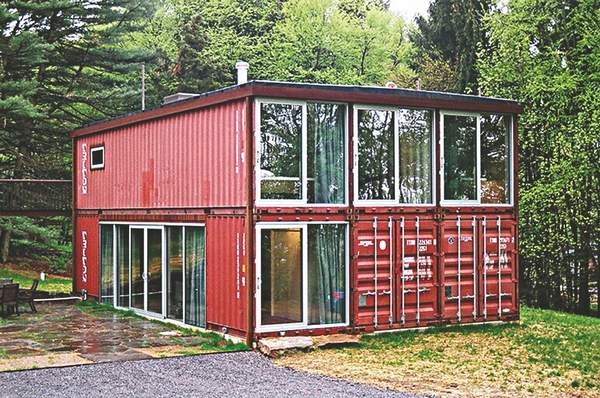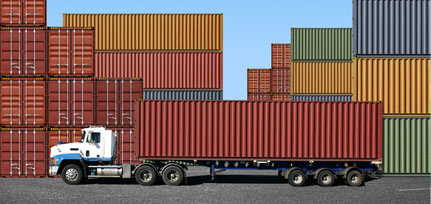The Physical Characteristics of a Shipping Container
Dimensions - Exterior : 20'L X 8'W X 8'6"H ; Interior : 18’ 8 13/16”L X 7’ 8 19/32”W X 7’ 9 57/64”H
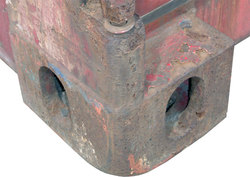 A corner of a container. This is one of the "feet".
A corner of a container. This is one of the "feet".
Structure - The boxes have sides that are not flat, and have multiple surfaces. The corners have casted “feet” that allow for the boxes to be stacked up to 7 boxes tall. They also have two doors at each end and there are twistlock fasteners at all corners.
Materials - Corrugated Weathering Steel (Corten Steel) which is a corrosion resistant steel and the floor is made from plywood which is coated in many coatings to keep out toxins.
Structural Limitations - 12 columns that are used to create the frame. They allow for the walls to be held up.
Basic Functions -a standardized reusable steel box. They are used to store and move materials and products in the global containerized intermodal freight transport system efficiently and securely. "Intermodal" indicates that the container can be moved from one mode of transport to another (from ship, to rail, to truck) without unloading and reloading the contents of the container. These containers are best for long distances with lots of weight. Suitable for intermediate cargo values. Low and high value shipments are usually less suitable for intermodal transportation. High value shipments will tend to use the most direct options (such as air cargo) while low value shipments are usually point to point and relying on one mode such as rail or maritime.
Citations
- http://en.wikipedia.org/wiki/Intermodal_container
- http://www.residentialshippingcontainerprimer.com/ISO%20Intermodal%20Cargo%20Shipping%20Containers
- http://www.treehugger.com/modular-design/shipping-container-housing-are-the-floors-toxic.html
- http://www.containerhome.info/ask-an-expert-toxic-materials-in-shipping-container-modules.html
- http://www.containercontainer.com/about_containers.aspx
